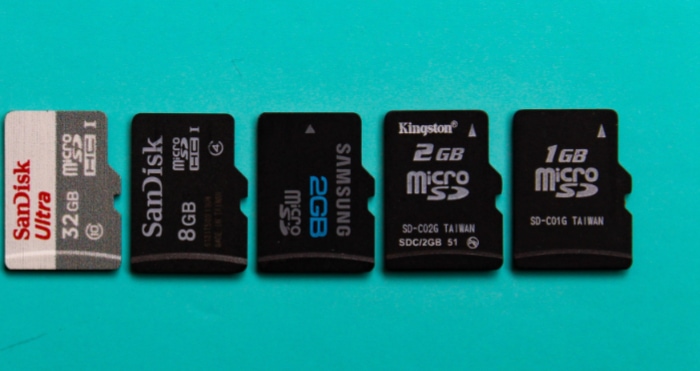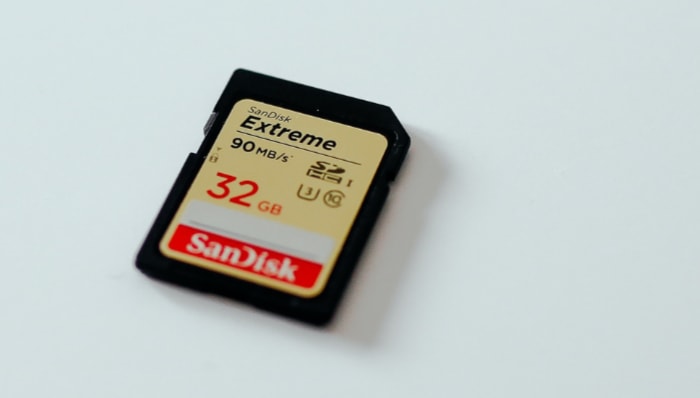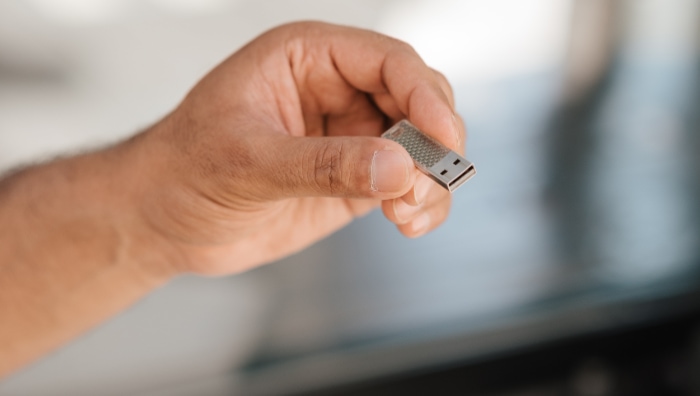SD Card vs. Flash Drive: Battle of the Storage Titans

Data storage has come a long way since the days of floppy disks and CD-ROMs, evolving into smaller, faster, and more reliable forms.
Two common storage devices utilized in our daily lives are Secure Digital (SD) Cards and Flash Drives. Both have revolutionized the way we store and transfer data, offering convenience, portability, and a range of storage capacities.
Understanding the differences between these two technologies, their applications, and the scenarios in which one may be preferable over the other, is crucial for making informed decisions about data storage.
This blog post aims to explore the world of SD Cards and Flash Drives, breaking down their functions, features, and helping you decide which storage medium is the most suitable for your needs.
Understanding The Basics
Before diving into the specifics of SD Cards and Flash Drives, it’s important to understand what they are at a fundamental level.
What are SD Cards?
Secure Digital Cards, commonly known as SD Cards, are small, non-volatile memory cards used in portable devices such as cameras, smartphones, and tablets.
They were first introduced in 1999 by the SD Card Association (SDA) to improve upon the limitations of MultiMediaCards (MMC). Since then, they have become a staple in consumer electronics due to their compact size, varying capacities, and versatility.
The Emergence of Flash Drives
Flash Drives, also known as USB (Universal Serial Bus) Drives or Thumb Drives, are portable plug-and-play data storage devices. Introduced in the early 2000s by Trek Technology and IBM, they quickly replaced floppy disks and CDs because of their superior storage capacity, durability, and convenience.
A Flash Drive uses flash memory to store data and comes with a USB interface that can be connected directly to a computer or other devices with a USB port.
The Role of SD Cards and Flash Drives in Data Storage
SD Cards and Flash Drives both play crucial roles in the realm of data storage. They serve as portable and reliable means to store, back-up, transfer, and share data. The key difference lies in their typical applications.
SD Cards are usually utilized in devices such as cameras and smartphones, where their compact form factor is necessary. On the other hand, Flash Drives are commonly used to transfer data between computers, store backup files, or even run portable applications.
How They Work
Understanding how SD Cards and Flash Drives function can provide insight into their efficiency, reliability, and performance.
The Working Mechanism of SD Cards
SD Cards employ flash memory technology for storing data. At its core, flash memory is a type of non-volatile storage, meaning it doesn’t require power to retain the data it holds. The information is stored in cells arranged in a grid, where each cell can hold a certain amount of data.
The cells in an SD card are controlled by a flash memory controller, which manages data storage and retrieval. When you save a file to the SD card, the controller determines where it should go and how it will be stored. Similarly, when you open a file, the controller reads the data from the correct cells and assembles it for use.
The Working Mechanism of Flash Drives
Like SD Cards, Flash Drives also utilize flash memory technology. However, they include additional components like a USB interface, making them versatile across different devices.
When data is written to a Flash Drive, it goes through a process called “programming.” The data is sent as electrical charges to the memory cells via the USB interface. Each memory cell represents a bit that can be set to 0 or 1, depending on whether it is charged or not.
When you want to retrieve data from the Flash Drive, the process is reversed. The USB interface sends a request to the memory controller inside the drive, which then reads the charge levels in the relevant memory cells and translates that into digital data.
A Comparison of Functioning
While both SD Cards and Flash Drives use flash memory, their different form factors and interfaces give them distinct advantages and applications. SD Cards’ small size makes them ideal for portable devices like cameras and smartphones.
In contrast, Flash Drives’ USB interface makes them universally compatible with any device that has a USB port, making them perfect for transferring data between different devices.
Key Features of SD Cards

SD Cards have many features that make them an attractive choice for data storage. This section explores these features in detail to help you understand what SD Cards bring to the table.
Types of SD Cards
There are three main types of SD cards: Standard SD cards, SD High Capacity (SDHC) cards, and SD Extended Capacity (SDXC) cards. The primary difference between these types is their storage capacity. Standard SD cards can hold up to 2GB, SDHC cards can store 4GB to 32GB, and SDXC cards can handle from 64GB up to a theoretical maximum of 2TB.
Storage Capacities
SD cards come in a variety of storage capacities, ranging from as small as 1GB to as large as 2TB. This wide range allows users to choose a card that suits their specific needs, whether that’s storing a few important documents or a vast collection of high-resolution photos and videos.
Speed Classifications
SD cards are also classified by their speed. The speed class indicates the minimum sustained writing speed, which is important for tasks like recording video.
The classes are 2, 4, 6, and 10, which represent 2MB/s, 4MB/s, 6MB/s, and 10MB/s respectively. There are also two Ultra High-Speed (UHS) classes, UHS-I and UHS-II, which offer even higher speeds.
Durability and Lifespan
SD cards are known for their robustness. They’re shockproof, waterproof, and x-ray proof, making them quite resilient in various conditions.
However, like all flash memory, SD cards do have a limited lifespan based on write cycles. Each time data is written to the card, it slightly degrades the memory cells, but under normal usage, an SD card can last for many years.
Use Cases and Compatibility
SD cards are widely used in portable devices like digital cameras, smartphones, tablets, and portable gaming consoles. Their small size makes them ideal for these types of devices. It’s important to check your device’s specifications to see what type of SD card it supports, as not all devices support all types and capacities of SD cards.
Key Features of Flash Drives
Similarly, Flash Drives come with a range of features that distinguish them in the data storage market. This section highlights these characteristics and explains why they matter.
Types of Flash Drives
Flash Drives, also known as USB Drives, come in several types, primarily differentiated by their USB interface. The main types are USB 2.0, USB 3.0, USB 3.1, and USB Type-C. USB 3.0, 3.1, and Type-C provide faster data transfer speeds than USB 2.0 and are backward compatible with USB 2.0 ports.
Storage Capacities
Flash Drives offer a broad range of storage capacities, similar to SD Cards. They can start from as low as 2GB and go up to 2TB or even higher. This diversity in storage options makes Flash Drives versatile for a variety of data storage needs, from small text files to large multimedia files.
Speed Classifications
The speed of a Flash Drive depends on its USB type. USB 2.0 drives have a maximum transfer speed of 480 Mbps, while USB 3.0 and 3.1 drives can reach up to 5 Gbps and 10 Gbps, respectively. USB Type-C can deliver speeds up to 20 Gbps, though this will depend on the device it’s connected to.
Durability and Lifespan
Flash Drives are generally robust and can withstand physical shocks. Many are also resistant to dust, water, and static, increasing their durability. Similar to SD Cards, Flash Drives do have a limited lifespan based on the number of write cycles. However, under normal usage, a Flash Drive can last for many years without any degradation in performance.
Use Cases and Compatibility
Flash Drives are a go-to solution for transporting and transferring data between computers. They’re also used for storing backup data and running portable applications. Given their USB interface, they are compatible with any device featuring a USB port, including computers, gaming consoles, and some modern TVs.
Comparing SD Cards and Flash Drives
While SD Cards and Flash Drives share some commonalities, they also have differences that might make one more suitable for a particular task than the other.
Performance Comparison
While both SD Cards and Flash Drives utilize flash memory technology, the performance can vary depending on the specific models. High-end Flash Drives and SD Cards both can offer high-speed data transfer.
However, because Flash Drives can use more advanced USB interfaces like USB 3.1 or Type-C, they potentially can provide faster transfer rates than SD Cards, which rely on the host device’s card reader speed.
Cost Comparison
When it comes to cost, the price of both SD Cards and Flash Drives generally increases with storage capacity and transfer speed. While there’s a broad overlap in price ranges, you can often find that Flash Drives tend to be slightly cheaper per gigabyte than SD Cards, particularly at higher capacities.
Size and Convenience Comparison
SD Cards are smaller than Flash Drives, which can be an advantage for use in mobile devices like smartphones and digital cameras. However, their small size can also make them easier to lose. Flash Drives, being slightly larger, are typically easier to handle and often come with a keyring or lanyard loop for convenience.
Security and Data Protection Comparison
In terms of security, some Flash Drives offer encryption features that protect your data if the drive is lost or stolen. While some SD Cards also offer a write-protect switch to prevent accidental erasure or modification of the stored data, they typically don’t have built-in encryption.
Compatibility with Different Devices
SD Cards are generally used with portable devices like cameras, smartphones, and tablets. On the other hand, Flash Drives, thanks to their USB interface, have universal compatibility with all devices featuring a USB port, making them the more versatile choice for data transfer between different devices.
Choosing the Right One for You

The decision between an SD Card and a Flash Drive is not a one-size-fits-all scenario. It depends largely on your individual needs and circumstances.
Determining Your Needs
Before making a decision between an SD Card and a Flash Drive, it’s crucial to first determine your needs.
Are you looking for storage for a portable device like a camera or smartphone, or are you seeking a means to transfer files between computers? Do you need high-speed data transfer, or is capacity more important to you? Understanding your specific needs will help guide your decision.
Consider the Device Compatibility
SD Cards are mainly used with portable devices, while Flash Drives are more universally compatible thanks to their USB interface. Ensure you consider what devices you’ll be using the storage with before making a choice.
Assess the Desired Storage Capacity
Consider how much storage you will need. If you’re storing documents or photos, a smaller capacity may be sufficient. But if you’re dealing with large multimedia files or backup data, a higher capacity will be more suitable.
Reflect on Speed Requirements
If you need to frequently transfer large files, or you’re using the device for tasks like video editing, higher speeds will be beneficial. USB 3.0, 3.1, or Type-C Flash Drives and UHS SD Cards can offer the high speeds necessary for such tasks.
Evaluate Your Budget
Finally, consider your budget. While there is overlap, Flash Drives are often cheaper per gigabyte than SD Cards, particularly at higher capacities.
In summary, the choice between an SD Card and a Flash Drive largely comes down to your individual needs and circumstances. Both have their strengths, and both can be the perfect solution in different scenarios.
By considering your needs, device compatibility, desired storage capacity, speed requirements, and budget, you can make an informed decision and choose the right storage solution for you.
Conclusion
Choosing between an SD Card and a Flash Drive for your data storage needs involves more than just comparing storage capacities. Both these devices, while utilizing similar flash memory technology, have distinct features that make them suitable for different tasks and devices.
SD Cards, with their small size, various speed classifications, and robustness, are ideal for use in portable devices such as cameras and smartphones.
On the other hand, Flash Drives, with their universal USB interface, offer broader compatibility, potentially higher transfer speeds, and often lower cost per gigabyte at higher capacities.
The choice between the two should take into consideration your specific requirements, the devices you intend to use them with, your desired storage capacity and speed, and your budget.
Regardless of the choice you make, it’s clear that both SD Cards and Flash Drives provide versatile, durable, and convenient solutions for data storage and transfer. By understanding the nuances between these two devices, you can make a well-informed decision that best suits your needs.


